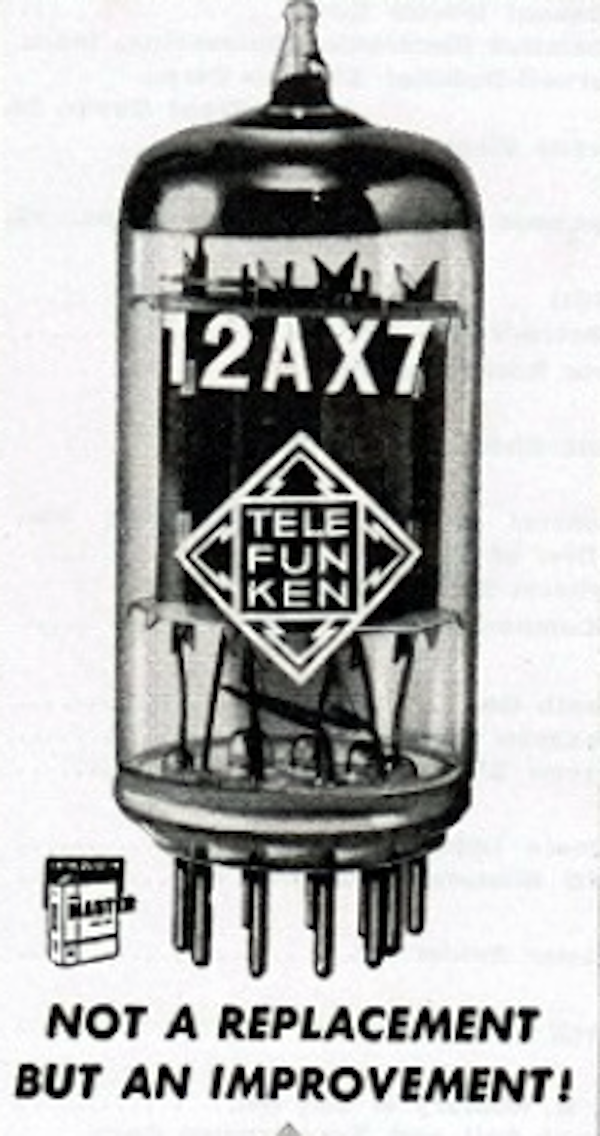
The 12ax7 tube is arguably the most popular audio vacuum tube that has ever been created. It’s popularity is driven by use in many Hi-Fi tube amplifiers and especially guitar amplifiers, where it’s pushed really hard and burns out fairly quickly. Introduced in May of 1947, the tube gained almost immediate popularity due to its very high gain – mu: 100, so it amplifies voltage 100x! Although I’ve seen JJ and Sovtek 12ax7 tubes go as high as 115, but that’s not up to spec.
To this day, 12ax7 is the highest gain tube in history. There was also 6AV6, a single triode tube, but it’s very rare and hasn’t been utilized much. So that huge gain allowed manufacturers (especially phono preamps and guitar amps) to used fewer tubes in their amps and make them more reliable and cheaper.
With all its coolness factors, 12ax7 also had its share of challenges. Producing control grid consistently for such high gain tube was very challenging, which led to large variation in 12ax7 tube quality. This challenge lead to 12ax7 to have higher even-order harmonics. To address these challenges 5751 was introduced in 1949, with more control over grid winding and lower noise, but also lower gain (5751 has mu of 70).
European manufacturers also contributed to the popularity of 12ax7, by introducing their own version called ECC83. It had better cathode materials (leading to longer life). Telefunken is famous for having a great sound and a very long life, in excess of 10,000 hours. Spiral wounded heater wire was also added to the tubes to reduce hum, this was adopted by American manufacturers who introduced 7025 tubes (it has the same distortion as 12ax7 though).
Due to its high gain, 12ax7 tubes, especially versions with long plates, were prone to be microphonic. A new variation of the tube was introduced, 12ax7a, which had shorter (14 mm vs 17 mm) tubes. It’s interesting that back in 1960s, it was considered to be an improvement, but these days, long plates and non-A version are more desirable due to their fuller sound.
Different manufacturers were able to do a better job with grid winding and reducing second-order harmonics to a minimum. Mullard was able to bring it down all the way to 0.015% in their early versions circa 1950s, later versions increased to 0.037% though. Sylvania didn’t do well with 0.15% for their 12ax7 tubes, but did great with 5751 (0.02%).
Since its initial introduction in 1947, many variants of the tube have been created. E83CC – a special version of 12ax7 with very long life 12ax7 tube (10,000+ hours) . Telefunken and Tesla also produced frame grid versions of E83CC (to reduce distortions), this technique was later used in 6DJ8 tubes. ECC803S, where S signifies screened tubes with low noise and matched triodes. Genalex’s designation for the specially selected tubes was B759, although all of them were produced by Mullard. For many other variations of 12ax7, see Tube Equivalents

Pingback: ECC83 Vs 12AX7: Comparing Two Iconic Vacuum Tubes - Killer Rig